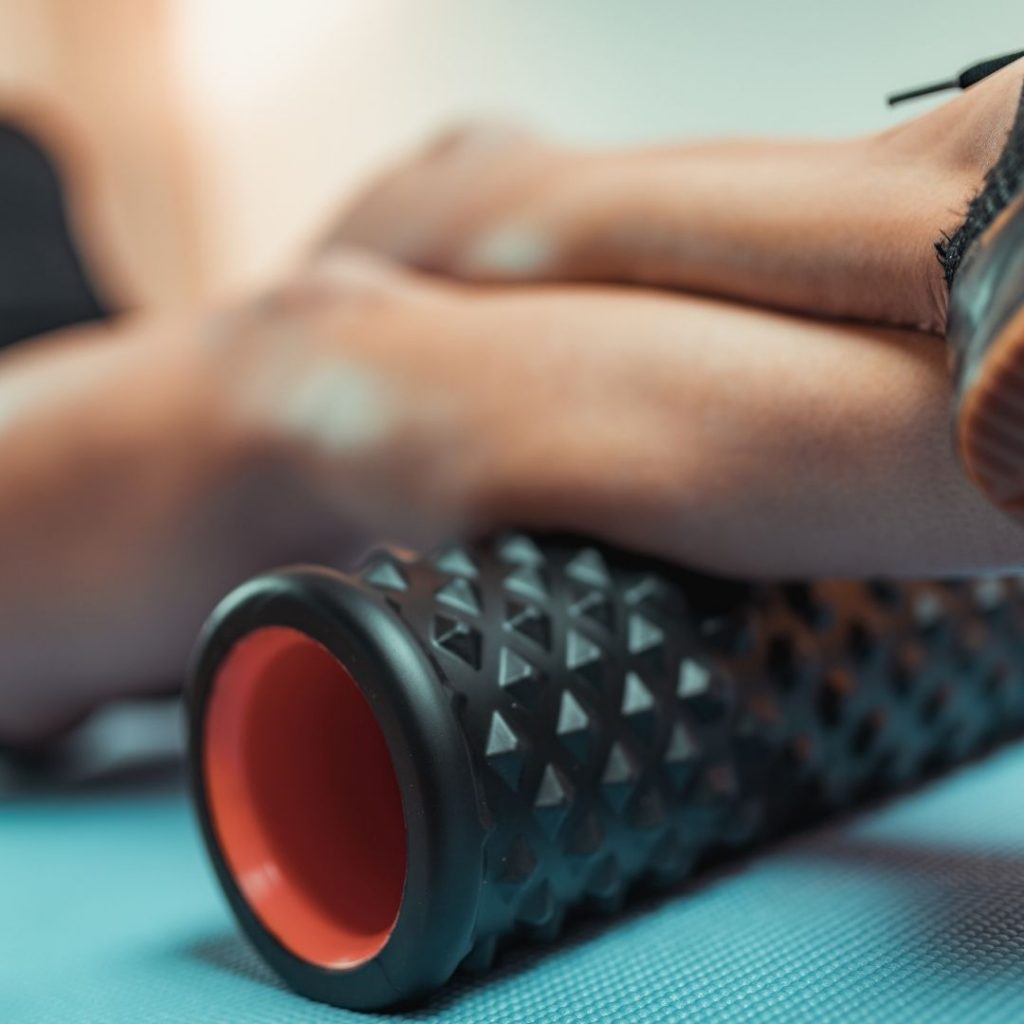Some creative tips on using a tennis ball and a foam roller (and other tools) to self-massage myofascial trigger points
A tennis ball or a foam roller are handy, portable self-massage tool that you can use on suspected “knots” in your muscles. In this basic article, we give you some fun tips on how to use both to relieve “knots” in your muscles.
Muscle “knots” are sore, aching spots of uncertain nature best known as “trigger points.” Having too many severe, chronic trigger points is myofascial pain syndrome, a rather vague label for chronic widespread pain that is presumed to involve primarily muscle pain (as opposed to neuropathy, arthritic joints, say).
In theory, knots are soothed by pressure and rubbing, and it’s often much easier to do that with a tennis ball than your thumbs and fingers.

The basic idea of tennis ball massage, is to apply specific pressure to a stiff or aching spot in a muscle by trapping it between your body and something else: usually the floor, sometimes a wall, or another body part (or a few other creative options like the back of the couch, the bottom of the bathtub, and so on). The point is to use the ball to reach spots that you simply can’t get to with your hands, and every other kind of tool massage is a variation on this theme.
Going to the wall: Most people usually start with the floor, but for many locations working against walls allows much better control over pressure. Plus you usually get a bit of a quadriceps workout!
Make sure your feet have a good grip. And you’ll quickly discover that a tennis ball may be a bit slippery for wall work, which is why many folks graduate to other kinds of balls.
The goal of tennis ball massage is to achieve a “release” by applying just the right amount of pressure: enough to do some good, but not enough to irritate your nervous system. (Although it’s quite safe, massage is not harmless.3) The sensation should be clear and strong and satisfying, what we call “good pain.”
If you are wincing or gritting your teeth, please be more gentle with yourself. You need to be able to relax.
Once you have adjusted yourself to achieve the right pressure, relax as much as possible and wait for the sensation to fade to about eighty percent of the original intensity. This is the “release”: a change in the physiological state of the tissues, or a “melting” of the knot, and/or just a sensory change, relief, a subjective experience of it easing. This can take anywhere from ten seconds to a few minutes. I’ll briefly introduce the (messy) biology of this below.
Below are some examples of different Tennis Ball Releases to target specific muscle groups.

You have seen one at the gym, you have heard your friends talk about “foam rolling” but what benefits might foam rolling have for YOU.
The foam roll is used for self-massage and can be used on almost all muscle groups but mainly used for the lower body muscles. Foam rolling is a self-massage technique used by many athletes following a work out. It helps massage and stretch the muscles. This type of self-massage can help loosen tight muscles or help release those hard to get to trigger points. The foam roll can be used on all muscles but is mostly used for quadriceps, gluteal muscles, IT band, hamstrings, and calves. This type of massage can help aid muscles with recovery after a gruelling weight lifting work out, a long run or just every day tightness.
Below are some examples of different foam rolling exercises to target specific muscle groups.
© All Rights Reserved OSR Sportsworks Consulting LLP